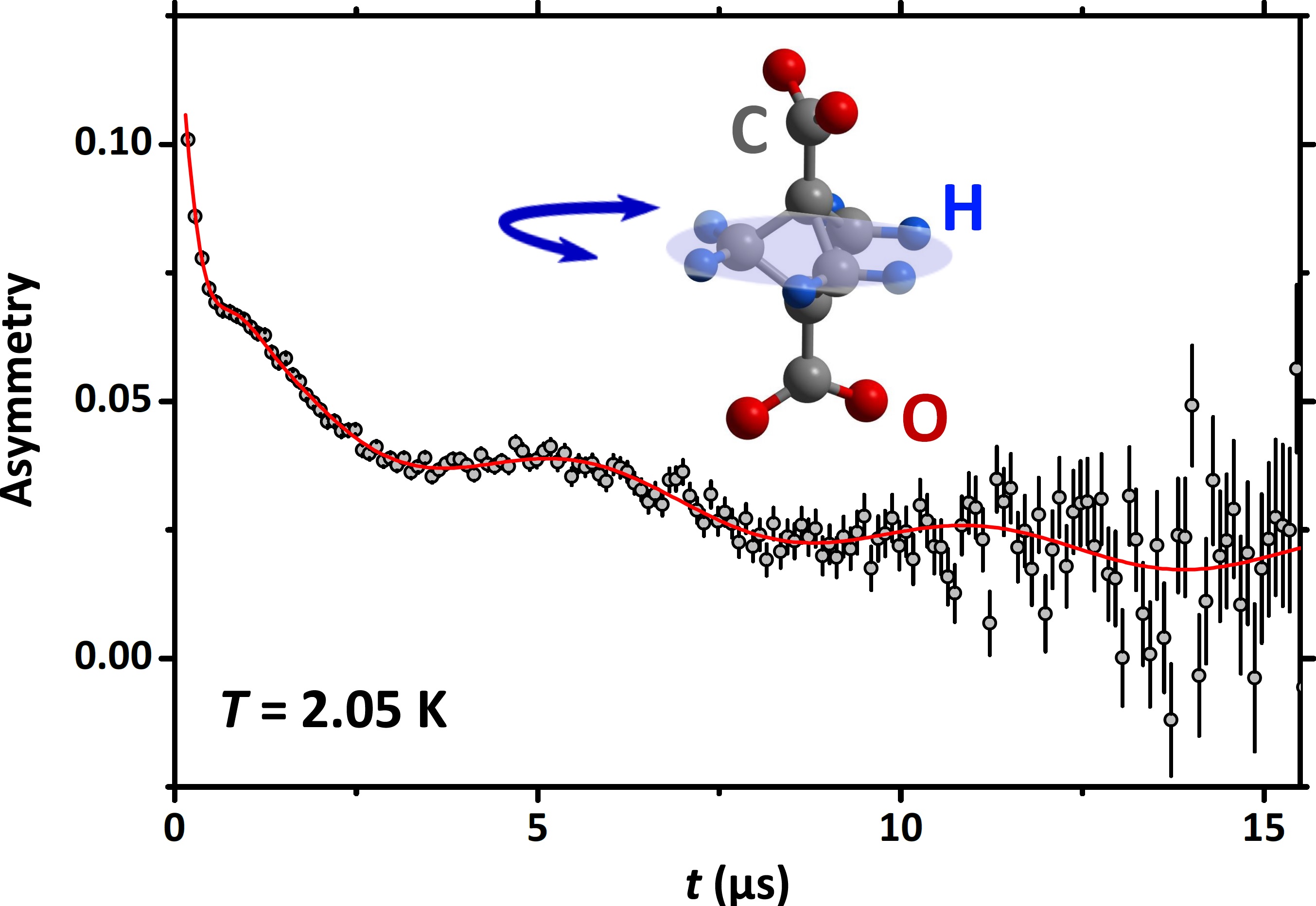Speaker
Description
Typically, the solid state is not well suited to sustaining fast molecular motion - however, in recent years a variety of molecular machines, switches and rotors have been successfully engineered within porous crystals and on surfaces. Here, we report on a combined $^{1}$H-NMR [1] and $\mu$SR [2] study of fast-rotating molecular rotors within the bicyclopentane-dicarboxylate struts of a zinc-based metal-organic framework. Here, the carboxylate groups anchored to the metal clusters act as an axle while the bicyclic units are free to rotate. The three-fold bipyramidal symmetry of the rotator conflicts with the four-fold symmetry of the struts, frustrating the formation of stable conformations and favouring the continuous, unidirectional, ultrafast rotation of the bicyclic units down to cryogenic temperatures. As a remarkable consequence, the fast-motions regime for the $^{1}$H-NMR spin-lattice relaxation rate is maintained down to at least 2 K, as confirmed by its dependence on temperature and magnetic field. These results are confirmed by zero-field and longitudinal-field $\mu$SR experiments and, in particular, by the dependence of the longitudinal relaxation rate on temperature. At the same time, the experimental evidences suggest several implantation sites for the muons, among which one directly onto the rotating moiety. Muons thermalized in this latter site generate clear oscillations in the depolarization (shown in the picture) resulting from the dipolar interaction with the $^{1}$H nuclear moments on the rotors. We evidence a highly unusual dependence of these oscillations on temperature, suggesting a complex influence of the rotations on the muon implantation and diffusion.

[1] J. Perego et al., Nature Chemistry 12 845 (2020).
[2] G. Prando et al., Nano Letters 20 7613 (2020).

